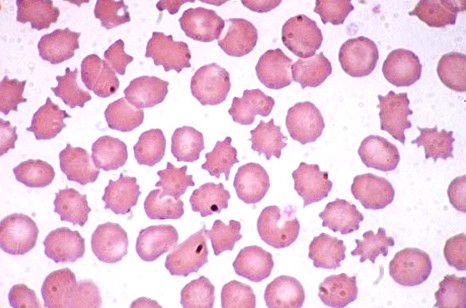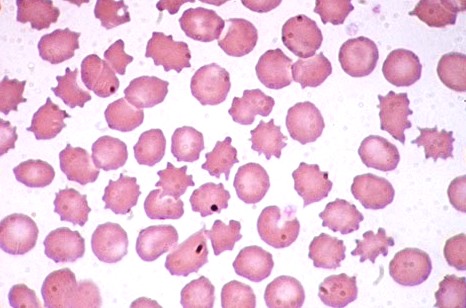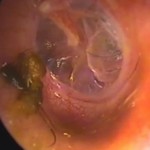Poikilocytosis can be defined as the occurrence of poikilocytes in blood. Poikilocytes refer to irregularly shaped RBCs or red blood cells. The term is derived from the Greek word ‘poikilos’ meaning ‘varied’. It may be noted that normal RBCs are flattened, circular discs which are fatter at the borders as compared to the middle portion.
Typically, when the count of abnormally shaped red blood cells or poikilocytes total up to more than 10 percent of the complete red blood cells population, then the condition is termed as poikilocytosis.
The occurrence of poikilocytosis means that excessive number of poikilocytes are present in the blood system. This can cause deficient transport of oxygen across the body via the bloodstream, which may not arise if all the RBCs were normal. The primary function of blood is to transport oxygen from the lungs, and nutrients from the bowel and stomach, to the numerous cells in the body. As poikilocytosis causes malfunction of this major blood functionality, it can lead to illnesses, diseases, and other health problems.
Types
The different types of poikilocytes occurring in human blood are as follows:
- Target cells or Codocytes
- Spike/Spur cells or Acanthocytes
- Burr cells and Echinocytes
- Spherocytes
- Ovalocytes and Elliptocytes
- Mouth cells or Stomatocytes
- ‘Bite cells’ or Degmacytes
- Sickle Cells or Drepanocytes
- Semilunar bodies
- Teardrop Cells or Dacrocytes
- Pyropoikilocytes and Microspherocytes
- Keratocytes
- Schistocytes
It may be noted that poikilocytosis does not define the kind of abnormally shaped RBCs that are present in the body.

Causes and diagnosis of poikilocytosis
Poikilocytosis is typically caused due to nutrient deficits or the underlying presence of digestive system disorders like celiac disease. It may also be an indication of some other serious underlying condition like blood cancer.
Poikilocytosis can be detected by conducting a ‘blood film’ blood test. In this procedure, a thin layer of blood is placed onto a microscope slide and later stained in a specific manner so as to permit easy microscopic examination of the different kinds of blood cells. Poikilocytes can be easily identified via such microscopic investigation as the abnormally shaped RBCs can be physically seen.
Treatment
Treatment of poikilocytosis is aimed at finding out the underlying cause of the condition and then correcting it. For example:
- If celiac disease is found to be the cause of poikilocytosis then medications, lifestyle changes, and other medical procedures are recommended to manage the condition and re-allow proper absorption of nutrients.
- If poikilocytosis is caused due to deficiency of folic acid, or vitamin B12, or other nutrients, then use of supplements as well as other medications are prescribed to replace the deficiency.
- Blood cancer treatment involves varied medical procedures such as chemotherapy, radiation therapy, blood transfusion, etc.


